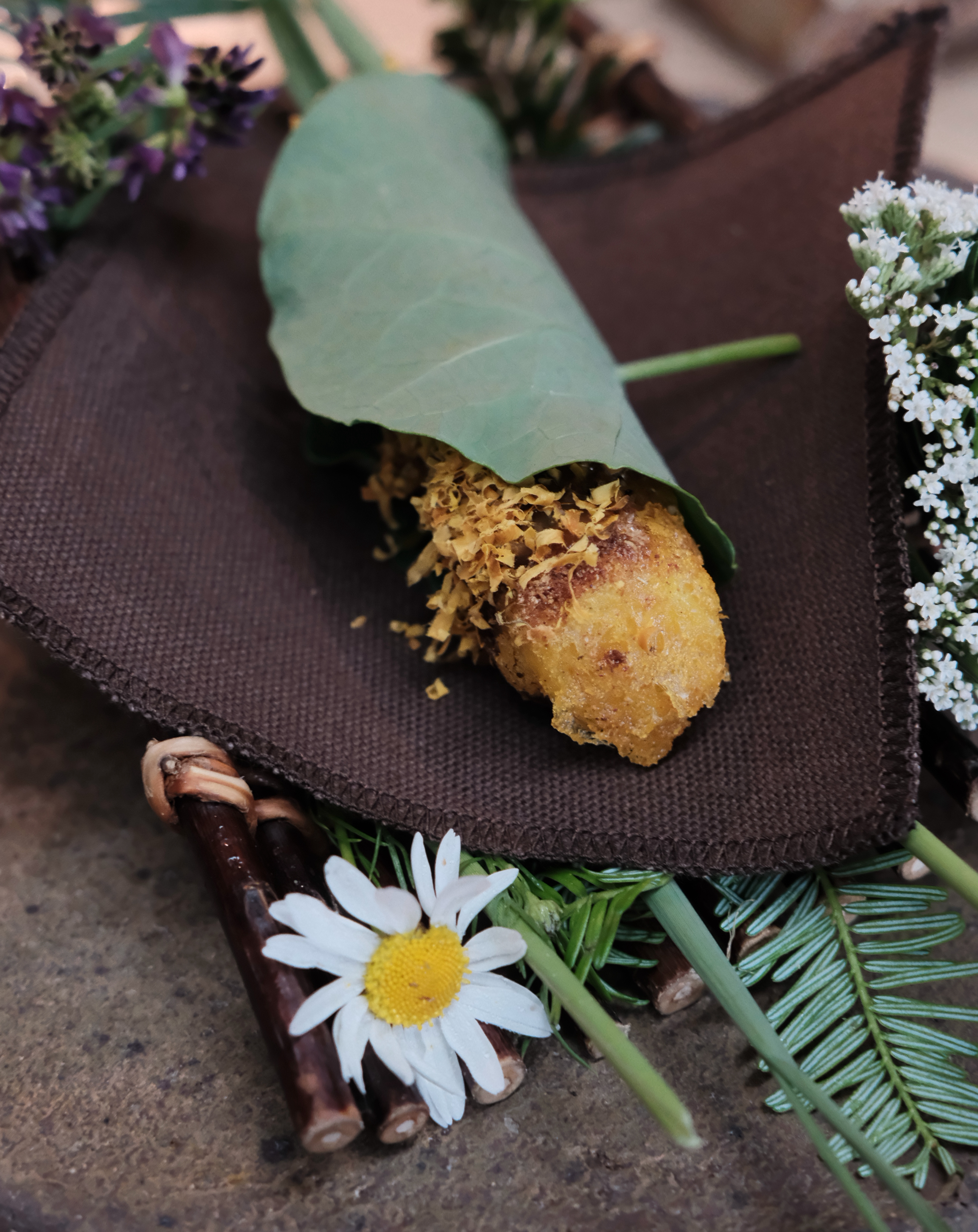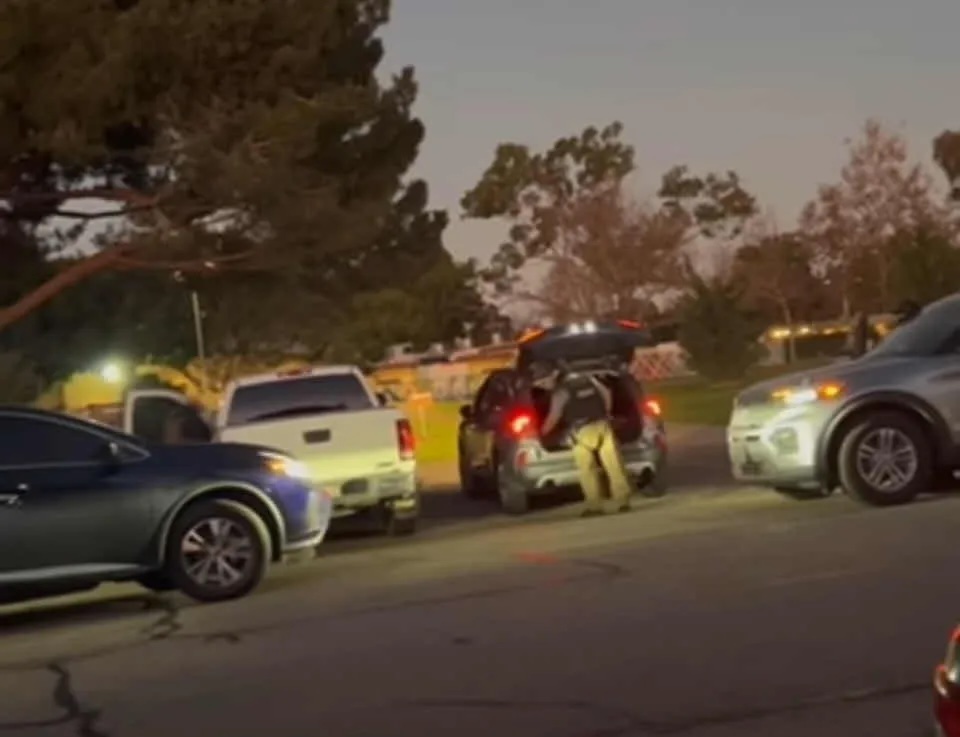“The prevailing sentiment in Europe right now has been to avoid traveling to the U.S., but I don’t think we should do that,” Rene Redzepi tells my table of three Americans, two Germans, and one Mexican at Noma, right before dropping perhaps the biggest restaurant scoop of the century.
We were all practically in tears after being personally greeted by all the cooks in the kitchen and disarmed emotionally after walking down the restaurant’s scenic pathway flanked by neon-colored wildflowers, a functioning apiary, and the salty breezes from the Øresund strait that surrounds the artificial island where Noma’s current “culinary village” sits.
The entire scene is reminiscent of a deleted scene from “Midsommar,” particularly the restaurant’s front door: a slanted wooden structure with a sleek black frame that cuts a sharp silhouette against the overcast sky amid the eerie, pastoral beauty of the flower-covered facade and a couple of white stones splatter-painted an indigo blue. The entire first portion of the Noma experience, before the meal even begins, has a ritualistic, pagan vibe. Having an unsettling blend of nature and cultish mystery, as if the restaurant were a hidden sanctuary awaiting a strange, floral ceremony.
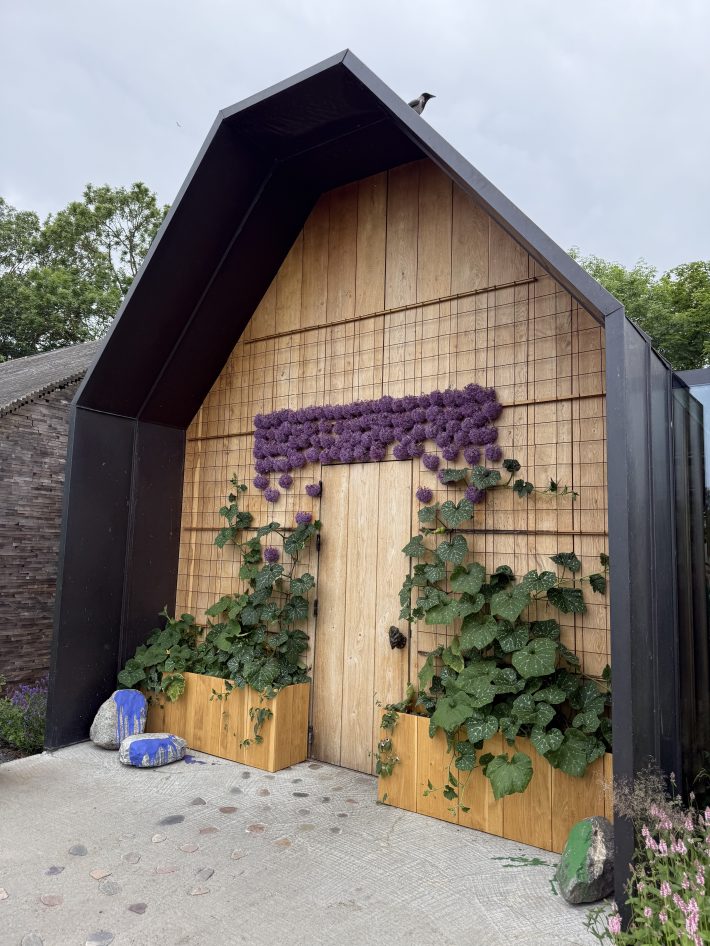


The famous chef is alluding to Trump’s embrace of full fascism and the violent ICE raids targeting mostly brown, indigenous-looking people and other immigrants happening across Los Angeles. Along with the many documented instances of even high-profile individuals being detained at LAX, denied entry, and sent back to their country of origin.
“But I think the opposite, I think right now is the time that we should go, especially to Los Angeles,” Redzepi says. “I’m taking Noma to Los Angeles and will be there for 11 months. I’ll be in Silver Lake, specifically.”
In a city where fine dining has historically been seen as a weakness and often reduced to a city that just has good tacos, this pop-up represents a rare opportunity to experience a pinnacle of gastronomy and potentially a turning point in the U.S.’s relatively young food culture (compared to Europe, Asia, and Mexico’s, which span back thousands of years), distinct from the everyday joys of crushing al pastor and asada a taquería.
I didn’t know how to respond at first. Mostly because I was high out of my mind after taking five fat rips of some dank Euro-grade hashish out of a Nordic apple to pregame for the most anticipated 20-course meal in my 20 years writing about food.
“We postponed the announcement once because of the fires earlier this year, and then we postponed it again because the raids started happening, but we are announcing it on Tuesday,” I heard him say.
While we can focus on the optics of opening a pop-up fine dining restaurant during an ICE siege that will be inaccessible to too many, Noma’s arrival in Los Angeles is a monumental event, as it’s not just any fine dining restaurant—it’s the fine dining restaurant that redefined culinary innovation globally, raising foraging and hyper-local ingredients to an art form.
In a city where fine dining has historically been seen as a weakness and often reduced to a city that just has good tacos, this pop-up represents a rare opportunity to experience a pinnacle of gastronomy and potentially a turning point in the U.S.’s relatively young food culture (compared to Europe, Asia, and Mexico’s, which span back thousands of years), distinct from the everyday joys of crushing al pastor and asada a taquería.
These realities coexist: Noma’s special occasion-type meal celebrates the cutting edge of culinary arts that can provide the equivalent to the thrills of a small vacation for the truly food-obsessed (since the menu will likely cost about the same), offering a transformative experience that’s apples and oranges compared to more accessible dining, without diminishing the value of either.

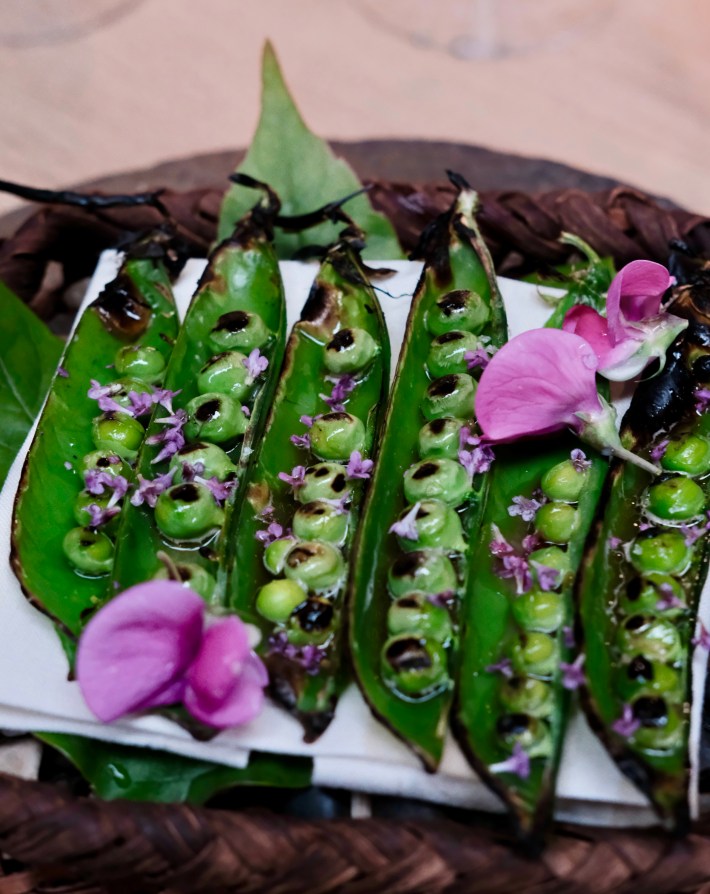
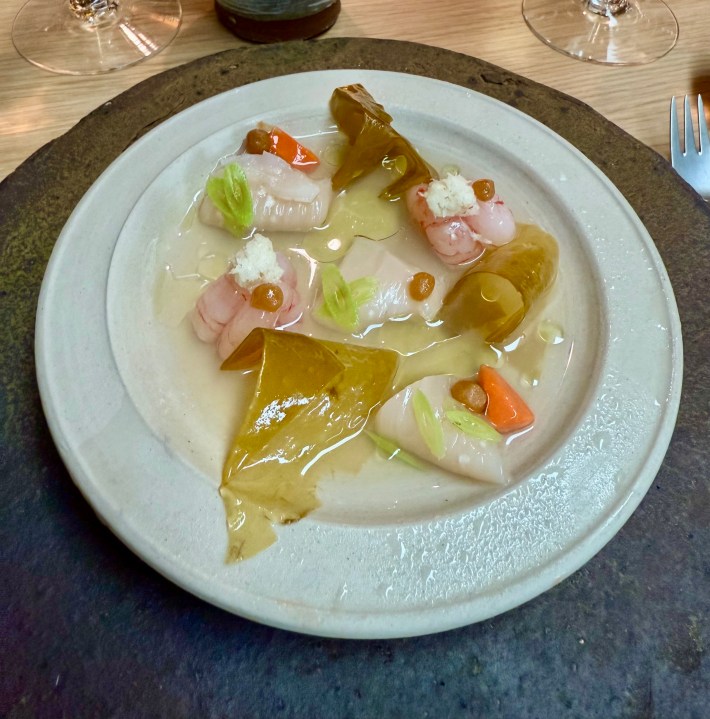
Not to mention, these Noma residencies have the power to change the lives of the people who work in them. Take Santiago Lastra, who spearheaded Noma’s Tulum residency and now has his own Michelin-starred restaurant in London named Kol. And of course, Rosio Sanchez and her mini-taquería empire in Copenhagen.
“L.A. is a very special place where people will give a shot to almost anyone, and where people are excited to eat on the street—that is very special,” Redzepi tells me.
I still couldn’t process that the scoop of a lifetime was even hitting my ears before he publicized it, and I was trying my best to “play it cool” as he talked to our table for a good 15 minutes before our meal even started.
Redzepi was talking specifically about Anajak’s “Thai Taco Tuesday” phenomenon, where owner and chef Justin Pichetrungsi sets up foldable chairs and tables in the alley next to his restaurant. It began in 2020 as a pandemic-era experiment and still has some of the longest lines to eat in Los Angeles. It’s also the home of the 38th-best taco in Los Angeles, according to L.A. TACO’s annual list.
The residency announcement arrives at the most awkward moment. As the city grapples with the ongoing I.C.E. siege, creating a tense environment for the restaurant industry, which has long relied on undocumented workers. This crackdown has led to a significant downturn in business, with local restaurants facing staffing challenges and declining sales due to fear.
At the same time, L.A.’s dining scene is celebrating a historic milestone, with Somni and Providence earning the city’s first three Michelin star designations this year, signaling a peak in local culinary prestige.
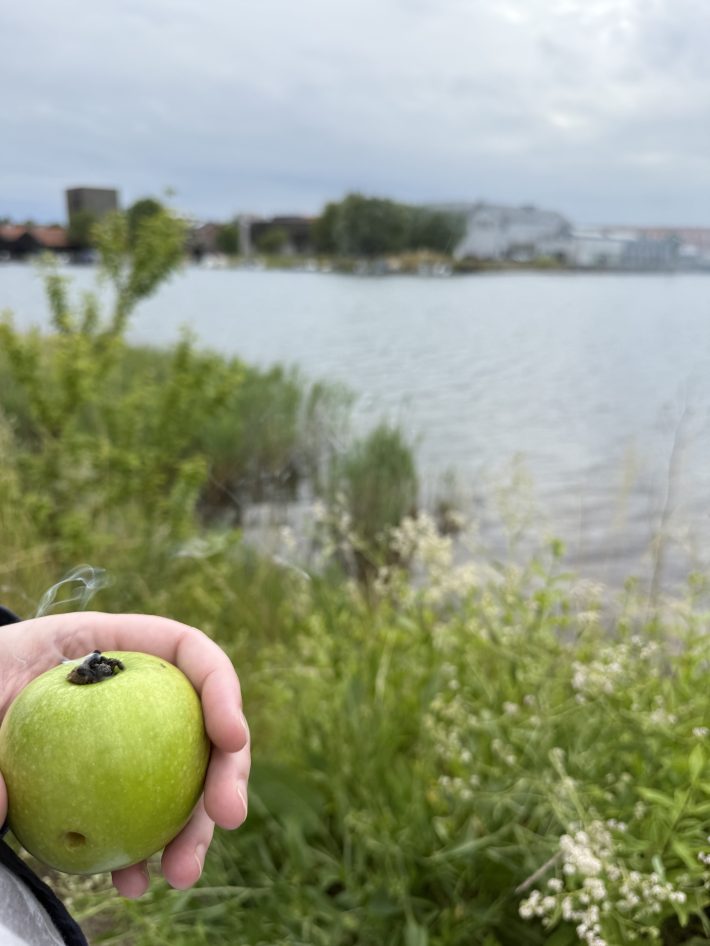
Noma’s high-profile pop-up, with its promise of creative collaboration and cultural immersion, could inject vital energy and global attention into this struggling scene. Let’s face it, we desperately need any support we can get. What will his menu look like? Will he embrace foraging through our local mountains as a native American practice that has been practiced since the beginning of time, or as a marketable term to upsell his menu? Will he honor California’s Mexican roots? A foraged miner's lettuce Caesar salad? A prickly pear “dessert salad” like one of the current desserts he serves now, with a puddle of La Rifa’s melted cacao?
Redzepi’s menu, and whether he acknowledges California’s pre- and post-colonization history, will either make or break the experience, especially among the city’s educated Chicano watchdogs, already traumatized by another white man arriving in the town of tacos to introduce “authentic” cuisine.
However, no word on whether René will sneak a taco—or whatever the hell he thinks a taco can be—onto that fancy Nordic menu. Although L.A. TACO has reached out to Redzepi for comment, we have not received a response.
But, speaking also from personal experience, seaweed asado on top of a tortilla isn’t that bad, and one of the most memorable taco-like bites I’ve had this year at Sanchez restaurant, the day after my Noma meal.
And real talk, he better have a taco on the menu.
